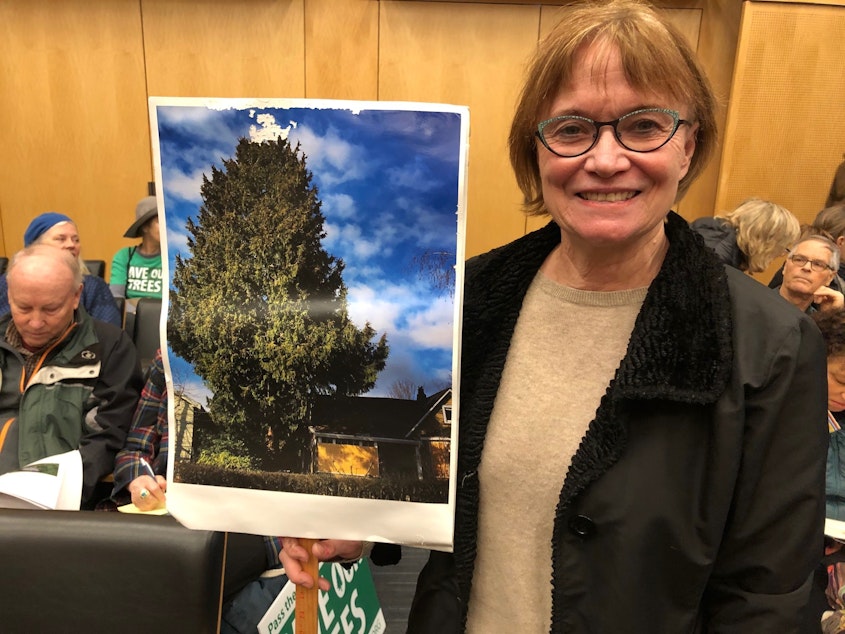Seattle tree rules are too lax, critics say. New city council members want to change that

More safeguards for Seattle’s trees: That’s something two newly elected Seattle City Council members say they want to secure in legislation next year.
In a briefing Wednesday, scientists told the council members that trees help counter storm water runoff and heat waves associated with climate change.
Critics said Seattle’s current rules are too lax and fall short of what other cities like Portland are doing to increase tree canopy.
Columbia City resident Susan Zeman said Seattle can find a way to combine growth with the benefits of tree preservation.
“I am not anti-development,” she said. “I am aware that by promoting urban density we are reducing suburban and exurban density and all of the tree-cutting and climate change that comes along with that.”
Seattle City Councilmember Alex Pedersen and Councilmember-elect Dan Strauss said they’re committed to passing new legislation in 2020.
Sponsored
“We’ve heard them in the community that they care about the environmental and health benefits of our tree canopy, and we want to make it stronger with a new ordinance that’s coming next year,” Pedersen said.
“The executive department’s very engaged, and we’re very excited about that,” Strauss said.
He said city agencies are engaged in community outreach and will come back with recommendations at the end of January.
Tree advocates hope that the new rules will do more to retain existing “exceptional” trees, which they said current rules do little to protect.
Portland's urban forestry manager Casey Jogerst attended the briefing to describe her city’s approach. Jogerst said having people pay a “fee in lieu” to remove trees, as Seattle has considered, allows developers to “buy your way out” during a building boom and could hinder preservation efforts.
Sponsored
She said allowing exemptions from the code in industrial areas, for example, can also make it hard to increase tree canopy in neighborhoods that lack it.
Sponsored
Annie Thoe, who chairs the group Neighborhood Treekeepers, said members of her group are dismayed by lots that have been cleared just to build bigger single family homes.
“Neighbors are completely fed up with the current ordinance that we have, which basically is so loose and lax for development that we’re actually seeing clearcuts throughout the city,” she said.
Critics blamed Seattle’s Department of Construction and Inspections for not doing more to prevent removal of “exceptional” trees.
But the agency’s Mike Podowski said they are improving enforcement, even in the absence of the new ordinance.
“It might not seem like there have been improvements made, but there are some,” he said.
Sponsored
Podowski said in the last two years they’ve done more outreach on the value of trees and updated their “tip sheets” and other public information.
“We’ve also improved our enforcement,” he said, with updated directors’ rules that guide interpretation and enforcement of city code.
“We updated one in 2017 that helps clarify how fees are calculated when trees are illegally cut down, and that has resulted in increased fines and we believe a greater deterrent for people to act outside of what’s allowed by the code,” Podowski said.
He said they’ve also improved their scrutiny of requests to remove “hazardous” trees.
Seattle is at least 2 percent short of its 30 percent goal for forest canopy.
Sponsored
But that number was developed in 2016; tree advocates say the city has likely lost canopy since then. They say Portland and the suburb of Lake Forest Park, among other cities, are increasing their canopy with stricter rules.




